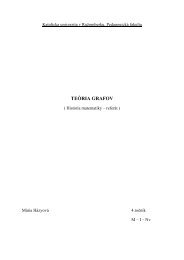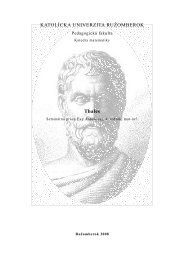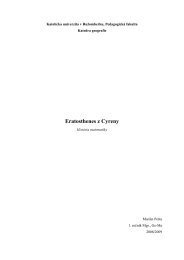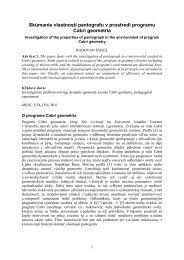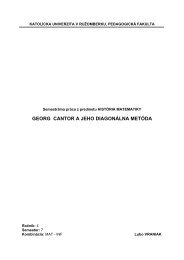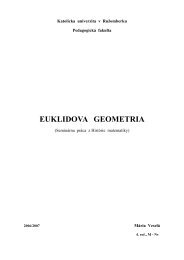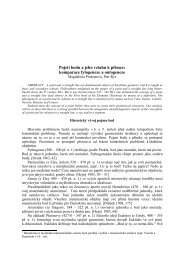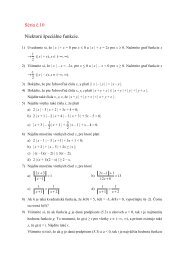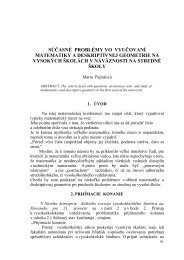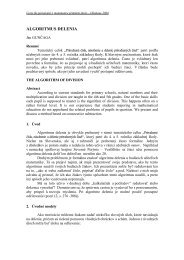Katedra matematiky - Katolícka univerzita v Ružomberku
Katedra matematiky - Katolícka univerzita v Ružomberku
Katedra matematiky - Katolícka univerzita v Ružomberku
- No tags were found...
You also want an ePaper? Increase the reach of your titles
YUMPU automatically turns print PDFs into web optimized ePapers that Google loves.
ICT Support in Mathematics 177A function is translated by a vector?!?! I understand a problem, whileI’m a math teacher, but in grade 9 the 80% of the pupils have no idea aboutvectors, so we can’t teach this. And in the case of coordinate geometry whois going to back in time (virtually) to grade 9 to parenthesize: that’s alsoa way of transformations of functions, while you have learned the word -translate.Introduction of concepts• Deductive way: The student comes from the general to the specific.Before pupils can predict or explain what will or has happened, i.e.why there is a singular verb or why the nail is attracted by the magnet,pupils must have acquired the generalisation which they can link tothe specific case. This is often a problem because pupils frequentlyonly come to understand the generalisation from looking at examples.• Inductive way: Abstraction, i.e. a specific individual comparison ofexamples, highlighting common features through to get to the generalization.Inductive thinking proceeds from a specific case, or fromcases, to the general. This is the opposite of deductive thinking. In inductivethinking the individual makes a number of observations whichare then sorted into a concept or generalization; the individual doesnot have prior knowledge of the abstraction but only arrives at it afterobserving and analyzing the observations.• Constructive way: Under certain conditions representative of a particularconcept, then generalize the procedure.GG could be the basic pillar of our "inductive" lessons.The task of preparing examples to teach a generalization is a bit morecomplex. Appropriate examples for illustrating a generalization must notonly illustrate the concepts contained in the generalization, but most alsoillustrate the relationships within the concept. Once the examples or illustrationsare prepared, the planning phase of inductive activities is complete.The teacher can now begin to implement the activity.Let’s construct the circumscribed circle of a triangle!Usually, we start first with acute-, right- and obtuse-angled triangle oneof each. Construct the perpendicular bisectors of the sides, and we got thecentre point of this circle. With the help of GG (with drag able pointsor using animation) you can represent infinite many drafts, where studentcan see mathematics in a new light. Here imagination and creativenesscombined together.




